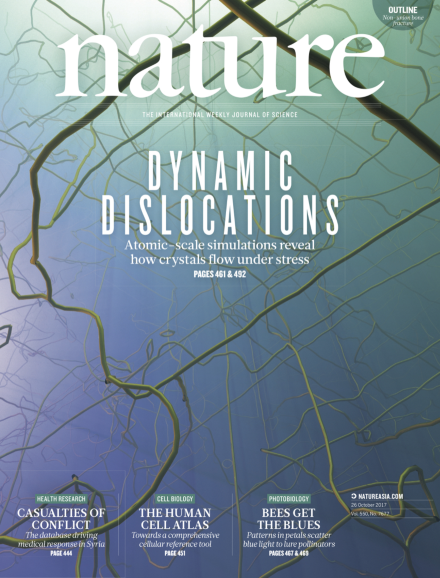Volume 550 Issue 7677, 26 October 2017
Editorial
World View
Seven Days
News
Correction
News
News Feature
Comment
Books & Arts
Correspondence
Obituary
News & Views
Article
Letter
Corrigendum
Addendum
Feature
Futures
Outline
-
Non-union bone fracture: a quicker fix
Nature Outline:
-
Closing the gap
Nature Outline:

